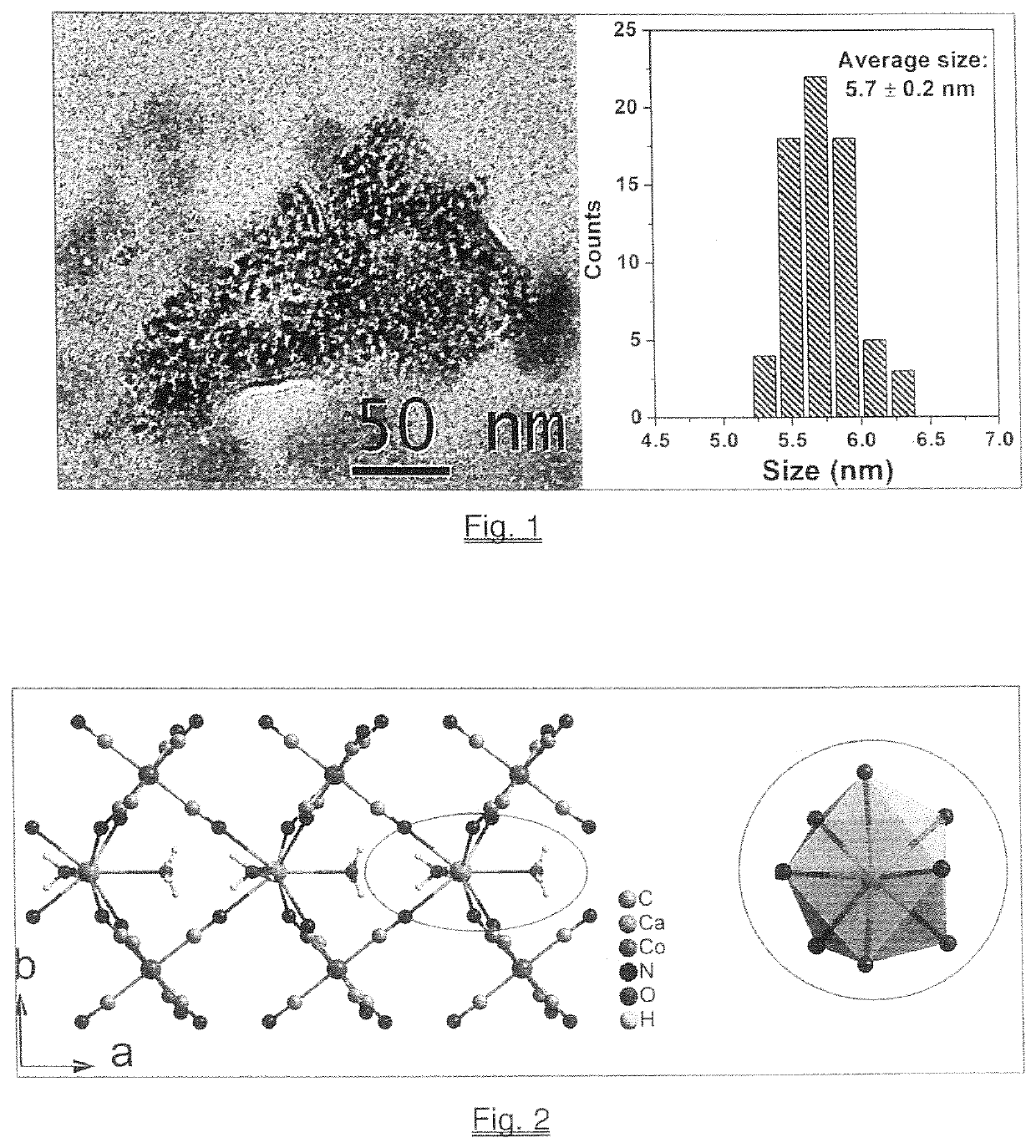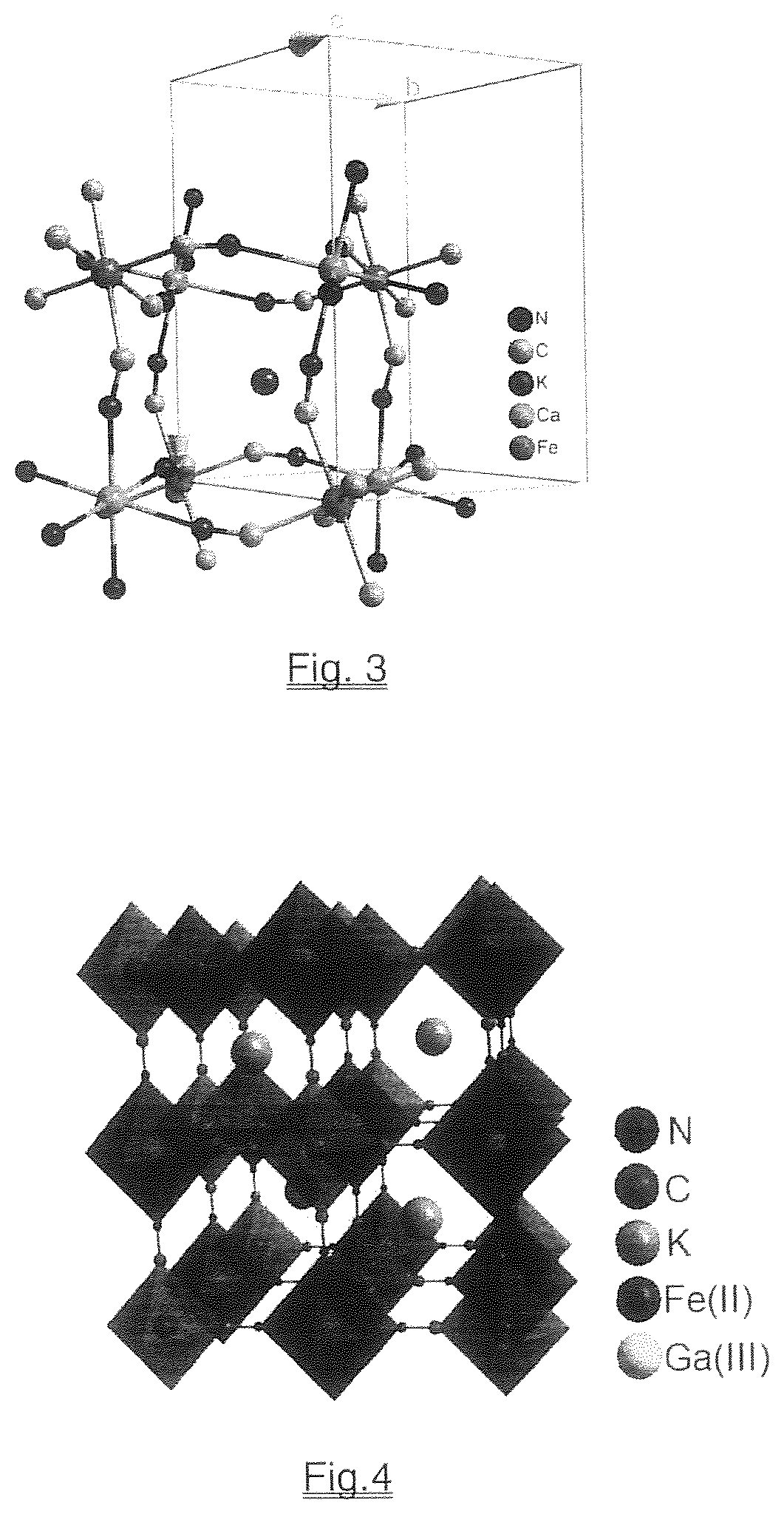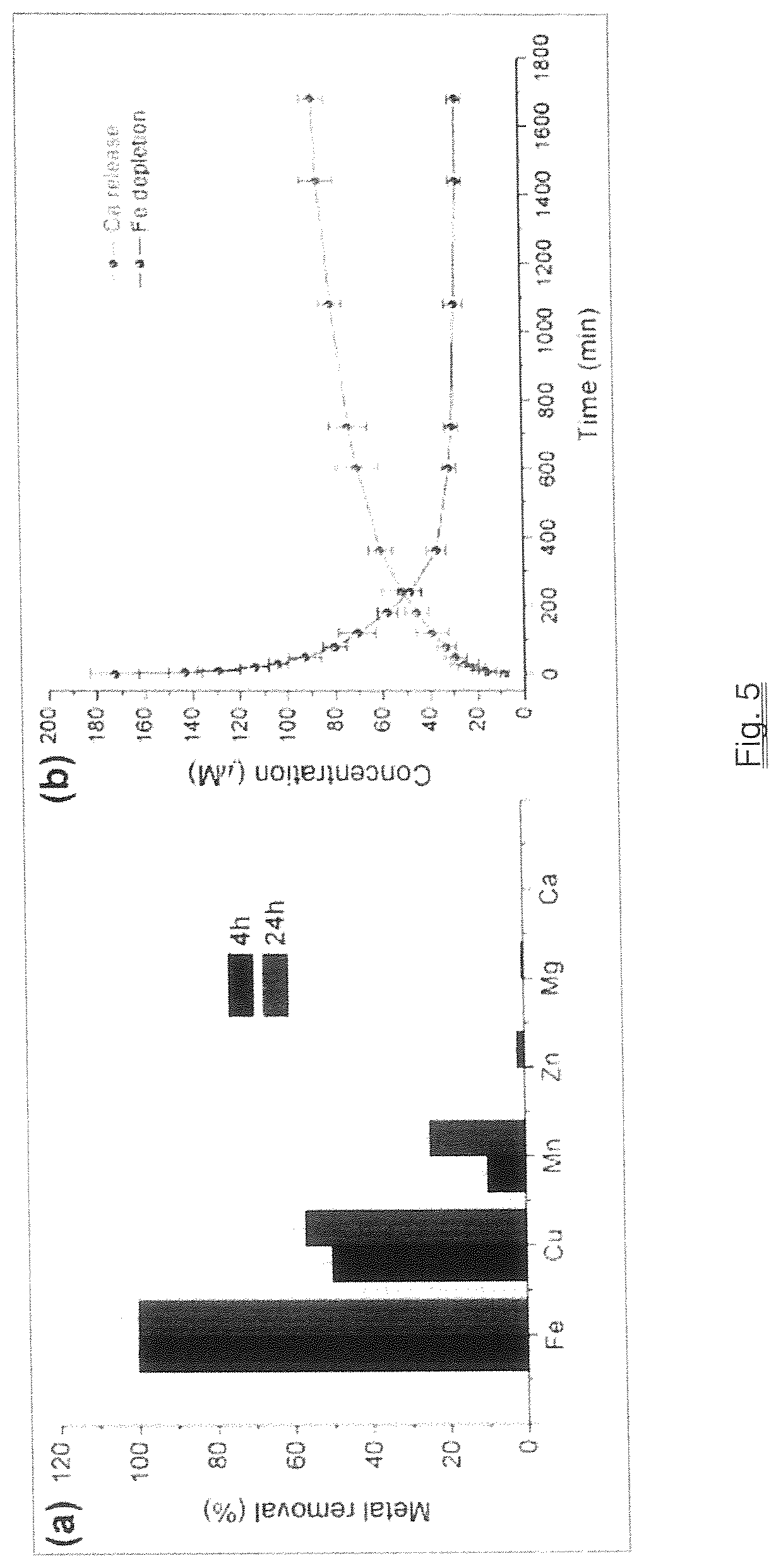Nanoparticulate Materials and Methods for Targeting Iron Acquisition and Metabolism for Treating Bacterial Infections
a technology of which is applied in the direction of microcapsules, capsule delivery, heavy metal active ingredients, etc., can solve the problems of imbibing the growth of bacteria, disturbing the iron metabolism of bacteria, etc., and achieves the effects of disrupting iron acquisition and metabolism, preventing bacterial growth, and being easy to internaliz
- Summary
- Abstract
- Description
- Claims
- Application Information
AI Technical Summary
Benefits of technology
Problems solved by technology
Method used
Image
Examples
Embodiment Construction
[0014]Synthesis of CaPBIII NPs:
[0015]Aqueous solution 1.0 mM CaCl2 (20 mL) containing 500 mg of polyvinylpyrrolidone (PVP with the average MW=40,000) was slowly added to a solution of 1.0 mM K3[Fe(CN)6] (20 mL) at room temperature, about 22° C., and atmospheric pressure, a clear pale-yellow solution was formed. After stirring for 20 minutes, the Tyndall effect detected by the use of a laser pointer indicated the formation of nanoparticles in the solution. In order to purify the nanoparticles, the solution was transferred into a dialysis bag made of regenerated cellulose tubular membrane (MWCO=3000) and dialyzed against distilled water for 4 hours. The solid product was collected by lyophilization. The metal analysis of this product using the atomic absorption spectrometric (AAS) method showed that the molar ratio of K:Ca:Fe is close to unity, confirming that the composition of the nanoparticle core has the expected formula KCa[FeIII(CN)6] and contained water molecules. The transmiss...
PUM
 Login to View More
Login to View More Abstract
Description
Claims
Application Information
 Login to View More
Login to View More - R&D
- Intellectual Property
- Life Sciences
- Materials
- Tech Scout
- Unparalleled Data Quality
- Higher Quality Content
- 60% Fewer Hallucinations
Browse by: Latest US Patents, China's latest patents, Technical Efficacy Thesaurus, Application Domain, Technology Topic, Popular Technical Reports.
© 2025 PatSnap. All rights reserved.Legal|Privacy policy|Modern Slavery Act Transparency Statement|Sitemap|About US| Contact US: help@patsnap.com



